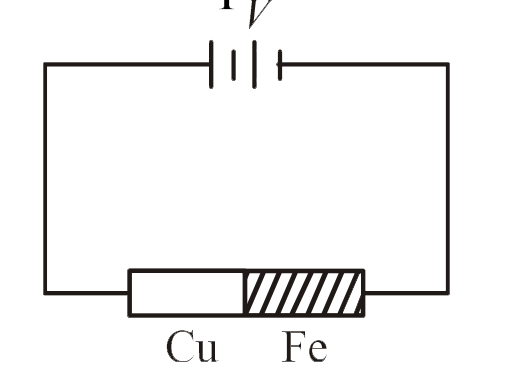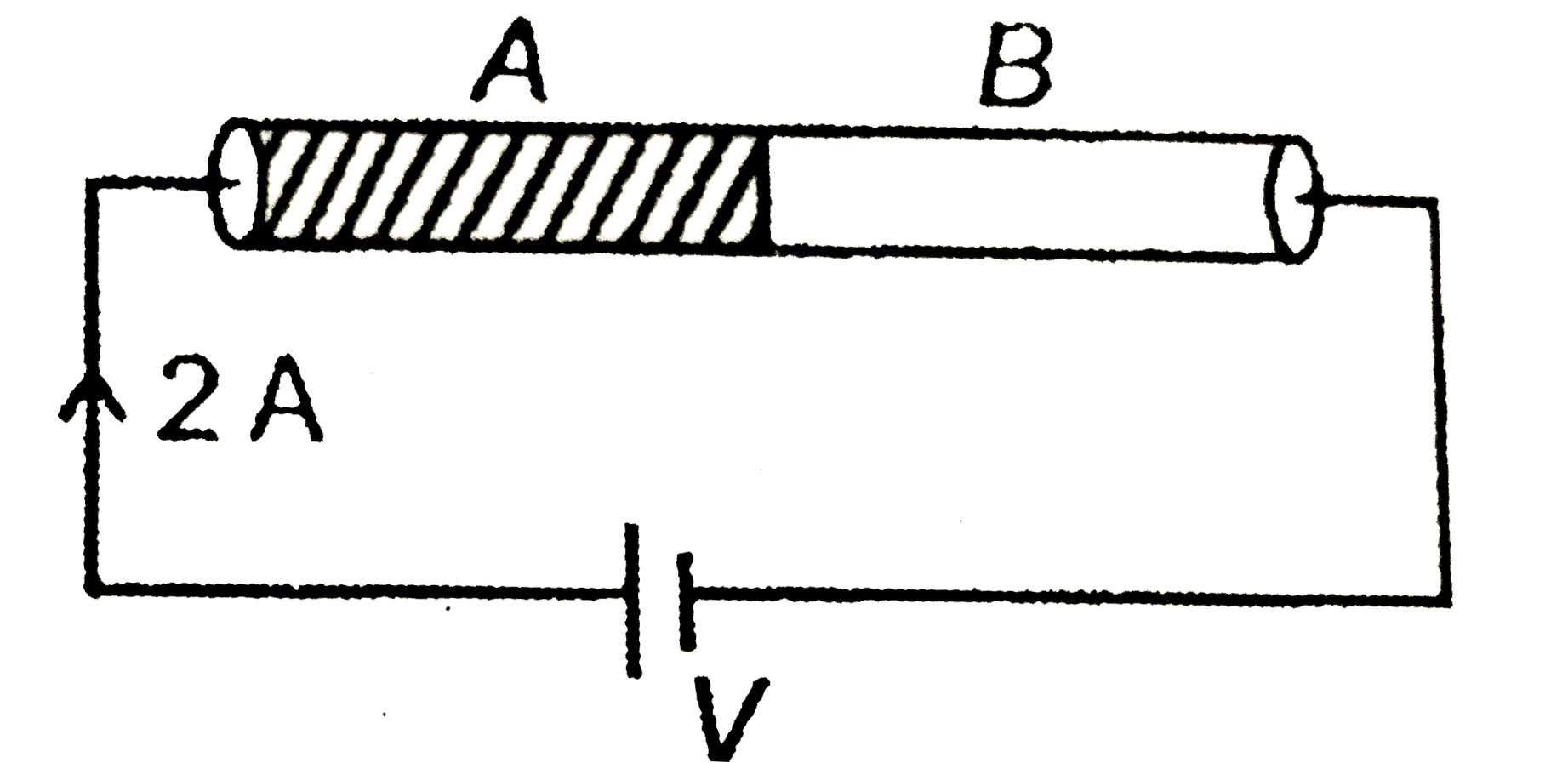Two rods are joined end to end, as shown. Both have a cross-sectional area of 0.01cm2 . Each is 1 meter long. One rod is of copper with a resistivity of 1.7×10–6 ohm-centimeter, the other is of iron with a resistivity of 10–5 ohm-centimeter. How much voltage is required to produce a current of 1 ampere in the rods?

0.00145 V
0.0145 V
1.7×10−6 V
0.117 V
The correct Answer is:D
Req=R1+R2=ρ1lA+ρ2lA
=10.1×10−4×(1.7×10−6+10×10−6)×10−2
=0.117Ω
I=VReq⇒1=V11.7×10−2=0.117Volt
Topper's Solved these Questions
- CURRENT ELECTRICITYBOOK - ERRORLESSCHAPTER - CURRENT ELECTRICITYEXERCISE - ASSERTION AND REASON
26 Videos
- CURRENT ELECTRICITYBOOK - ERRORLESSCHAPTER - CURRENT ELECTRICITYEXERCISE - NCERT BASED QUESTIONS (HEATING EFFECT OF CURRENT)
67 Videos
- ATOMIC AND NUCLEAR PHYSICSBOOK - ERRORLESSCHAPTER - ATOMIC AND NUCLEAR PHYSICSEXERCISE - Assertion and Reason
23 Videos
- ELECTROMAGNETIC INDUCTIONBOOK - ERRORLESSCHAPTER - ELECTROMAGNETIC INDUCTIONEXERCISE - ASSERTION & REASON
20 Videos
Similar Questions
What length of a copper wire of cross-sectional area 0.01mm2 would be required to obtain a resistance of 1kΩ? Resistivity of copper =1.7×10−8Ωm.
View SolutionWhat length of a copper wire of cross-sectional area 0.01mm2 will be needed to prepare a resistance of 1kΩ? Resistivity of copper =1.7×10−8Ωm.
View Solution
Knowledge Check
Two metal rods are joined end to end, as shown in the figure . Both have same cross sectional area of 10−6m2 and each rod is 1m long. The rod A has electrical resistivity of 2×10−6Ω cm and B has electrical resistivity of 10−5Ωcm . The voltage V required of produce current of 2A in the rods is
 A0.12voltB0.24voltC0.20voltD0.36volt
A0.12voltB0.24voltC0.20voltD0.36voltA copper wire has a diameter of 0.5mm and a resistivity of 1.6×10−6 ohm cm. How much of this wire would be required to make a 10 ohm coil ? How much does the resistance change if the diameter is doubled ?
A122.7 and 1/4B130 and 1/2C120 and 1/5DNone of theseA copper wire of length 2m and area of cross-section 1.7×10−6m2 has a resistance of 2×10−2ohms. Calculate the resistivity of copper.
A1.7×10−8B1.7×10−9C1.7×10−10D1.7×10−11
The resistance of a wire of length 80cm and of uniform area of cross-section 0.025cm2, is found to be 1.50 ohm. Calculate the resistivity of the wire.
View SolutionCalculate the resistance and electrical conductivity of a 2m long copper wire of cross sectional area 0.01mm2 . Givne resistivity of copper is 1.78×1010Ωm.
View SolutionA current of 5Amp. exist on a 10 ohm resistance for 4min. How much charge pass through any cross- section of the resistor in this time ?
View SolutionA copper wire of cross sectional area 2.0 mm2, resistivity =1.7×10−8Ωm, carries a current of 1 A. The electric field in the copper wire is
View SolutionA metel rod of the length 10cm and a rectangular cross-section of 1 cm xx 1/2 cm is connected to a battery across opposite faces. The resistance will be
View Solution
